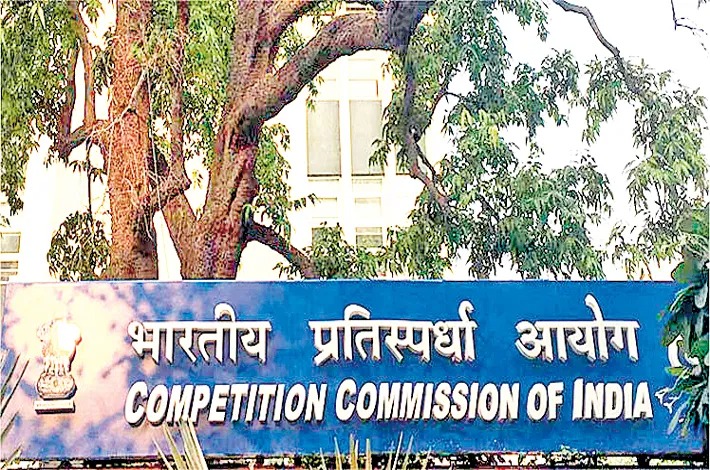1. This appeal has been preferred under Section 173 of the Motor Vehicles Act, 1988 against the award passed by the Additional Member Motor Accident Claims Tribunal, Burhanpur in Claim Case No. 05/2004 for enhancement of the impugned award.
2. It is admitted fact that the Truck bearing registration no. PY 01 K 8132 was owned by respondent no. 1 and respondent no. 2 was the insurer of the said vehicle. Appellant was the driver of Truck bearing registration No. MP 81 A 3864 owned by respondent no. 3 and insured with respondent no. 4. On the date of incident that on 17.07.2002, the appellant, driving Truck No. MP 81 A 3864 was going from Nepanagar to Secunderabad on Highway No. 7. Truck No. PY 01 K 8132 coming from the opposite direction which was driven rashly and negligently by Feroze Basha dashed into the appellant''s truck wherein his truck was totally damaged. The appellant sustained grievous injury in his left eye, hand & little finger of his left foot and third finger of his right foot was amputated. The driver of Truck No. PY 01 K 8132 died due to the accident. On the above grounds, the appellant claimed compensation to the tune of Rs. 13,85,017.48/- from the respondents jointly and severally. Learned counsel for the appellant placed reliance on the judgement passed by the Hon''ble Supreme Court in the case of Rajan Vs. Soly Sebastian & Another reported in (2015) 10 SCC 506 and Jakir Hussain Vs. Sabir & Ors. reported in (2015) 7 SCC 252.
3. Respondent no. 2 has denied the claim and stated in the written statement that, at the time of incident, driver of Truck No. PY 01 K 8132 had valid and effective driving licence. Appellant himself was negligent while driving his truck and therefore, he was liable for the accident. Respondent no. 1 denied the claim of the appellant on the same grounds.
4. Learned Tribunal found that the appellant sustained grievous injuries in the accident due to rash and negligent driving of the driver of Truck No. PY 01 K 8132. The appellant is not liable for any negligence. Learned Tribunal found that the appellant was driving the vehicle slowly and carefully and he was on the left side of the road. Evidence produced by the appellant has not been rebutted by the respondents. On the above grounds, by drawing adverse inference against the respondent no. 1, learned Tribunal partly allowed the claim of the appellant and awarded Rs. 92,000/- with 6% interest per annum against the respondents.
5. The impugned award is under challenge in this appeal on the grounds that the amount awarded by the learned Tribunal is on the lower side. The appellant was a professional driver and has suffered permanent disability which affected his earning capacity. It is also evident that, as his right leg has been shortened as observed by the learned Tribunal itself, but did not take this fact into consideration therefore, the appellant prayed to enhance the impugned award with interest.
6. Heard learned counsel for both the parties and perused the record.
7. Regarding negligence of the driver of offending vehicle (truck no. PY 01 K 8132) and the liability for compensation no appeal has been filed on behalf of the respondents. The findings of Learned Tribunal, for injuries and 38% permanent disability which is caused to the appellant in his right leg is not challenged by the respondents. Dr. Dilip Patidar (PW-5) issued the disability certificate (Ex. P/30) in favour of the appellant. Dr. Dilip Patidar (PW-5) in his statement has mentioned about the following injuries caused to the appellant:
(1) Stiff right knee joint.
(2) Commulated fracture of right leg tibia febula
osteomyelitis changes.
(3) Avascular necrosis of right humerus nonunion
resulting in painful shoulder movement & stiffness.
(4) Equinus stiffness of right foot, anklejoint and
restriction of movement.
(5) Amputation of third finger of right leg.
9. Due to the injuries and disabilities caused to the appellant, it is impossible for him to work as a driver in future. He can earn his livelihood by doing other occupation. He has no injury or disability on his hands. Some grievous injury is found in his right leg, but no compensation is awarded by the learned Tribunal under these heads. Therefore, in the considered view of this Court, Rs. 92,000/- as awarded by the Tribunal is not just and proper compensation.
10. In case of Rajkumar Vs. Ajay Kumar [2011(2) MPLJ 256], important steps to ascertain the effect of the permanent disability has been described as follows :
"The Tribunal has to first ascertain what activities the
claimant could carry on inspite of the permanent disability
and what he could not do as a result of the permanent
disability (this is also relevant for awarding compensation
under the head of loss of amenities of life). The second step
is to ascertain his avocation, profession and nature of work
before the accident, as also his age. The third step is to find
out whether (i) claimant is totally disabled from earning
any kind of livelihood, or (ii) whether in spite of the
permanent disability, the claimant could still effectively
carry on the activities and functions, which he was earlier
carrying on, or (iii) whether he was prevented or restricted
from discharging his previous activities and functions, but
could carry on some other or lesser scale of activities and
functions so that he continues to earn or can continue to
earn his livelihood."
11. In the case of Yadava Kumar Vs. Divisional Manager,
National Insurance Company Ltd. [2011(2) MPLJ 250], the
appellant was a painter and has sustained a fracture. The doctor
assessed the disability at 33% in respect of the right upper limb and
21% towards left upper limb and 20% in respect of the whole body,
which prevents the appellant from painting in view of multiple
injuries, sustained by him. Hon''ble Supreme Court has held that by
carrying those injuries, he is bound to suffer loss of earning capacity
as a painter and a consequential loss of income is the natural outcome.
12. In case of Yadava Kumar (supra), in which the case Sunil Kumar Vs. Ram Singh Gaud & Ors. [2008(1) ACJ 9] and Priya Vasant Kalgutkar Vs. Murad Sheikh & Ors. [AIR 2010 SC 40], have been referred, the same principle was reiterated by the Apex Court.
13. The same principle is applicable in present case. The applicant was a driver by profession. Due to the injuries in finger of his right feet, his working capacity is definitely adversely affected by 38% to 40% permanent disability in his right leg. He has loss in his earning capacity. His chances of getting any other employment is remote. Even if he gets any job, the salary would be a pittance. He can work in limited businesses by his hands.
14. In case of Mukesh Kumar Sharma Vs. Ramdutt & Ors [2006 ACJ 1792], the Court applied the multiplier method keeping in mind the percentage by which the injured person''s earning capacity has been reduced. Similar calculation was made by the Division Bench of Hon''ble High Court of Karnataka in case of Syed Nisar Ahmed Vs. The Managing Director, Banglore Metropolitian Transport Corporation [2003 (5) Karn.L.J.186] Therefore, as driver, his loss of future earning capacity is assessed as 60%. In the instant case doctors have not found any shortening in the applicant''s leg and his leg is also not amputated. Therefore, the principles of 100% disability is not applicable in the present case.
15. In the light of above observation, in the instance case, multiplier method is to be applied for injuries of the appellant. If the income of the appellant at the time of accident is taken as Rs. 1,500/- then his yearly income comes to Rs. 18,000/-. If multiplier of 13 is applied in view of the age of the appellant being 36 years at the time to incident, then the total income comes to Rs. 2,34,000/-. Loss of future earning per annum 60% of the prior annual income is Rs. 1,62,000/- and Rs. 85,000/- towards medical expenses and Rs. 5,000/- as conveyance, nourishing food attendant charges and Rs. 10,000/- towards pain & suffering. The calculation of total compensation comes to Rs. 2,62,000/- whereas Rs. 92,000/- is awarded in the impugned award.
16. In view of the aforesaid, this appeal is allowed in part and the appellant is held entitled to receive sum of Rs. 1,70,000/- over and above the amount of compensation already awarded by the Tribunal without affecting the direction of the Tribunal regarding depositing the amount of compensation and liability. The enhanced amount shall carry interest @ 6% per annum from the date of application till its realization. In the facts and circumstances of the case parties are directed to bear their own costs.

